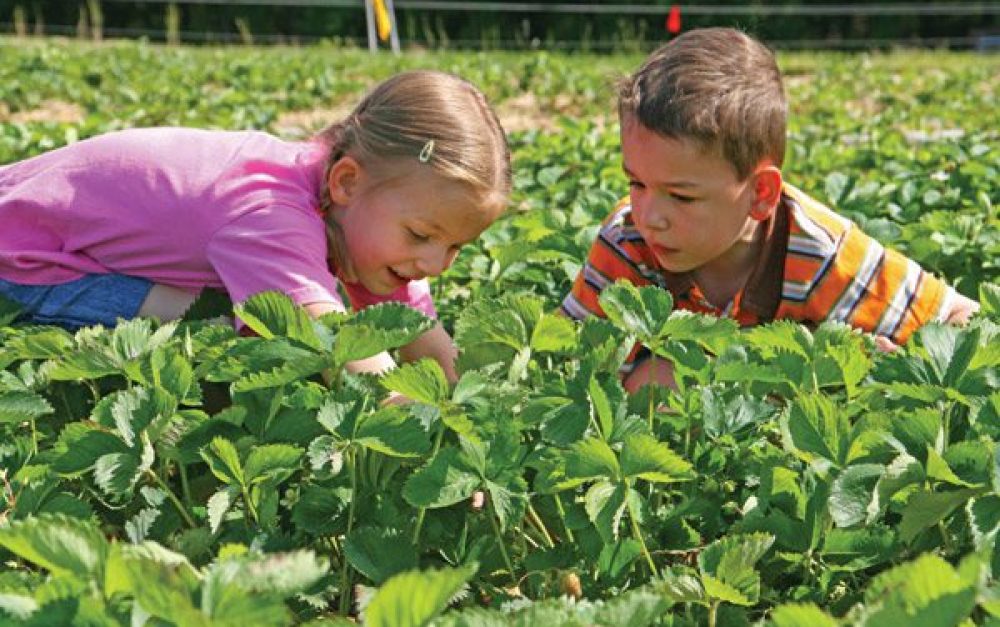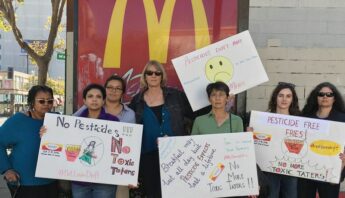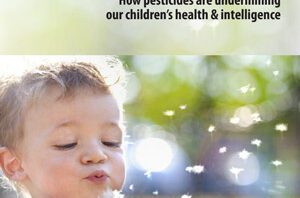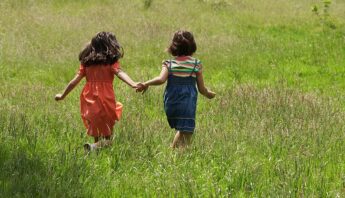As we head into the warm summer months, I often hear this question from neighbors, friends and fellow moms: how can I best avoid pesticides?
As we head into the warm summer months, I often hear this question from neighbors, friends and fellow moms: how can I best avoid pesticides?
It’s a season of outdoor romping, family travel, daycare, camps and play. In many parts of the country, it’s also high season for pesticide spraying in agricultural fields, and in and near places where children are spending their days. So what to do?
Last week I had a chance to share some tips and tools via a MomsRising twitterchat. It was a lively conversation, with lots of great questions and resources shared all around. I’ve pulled a few highlights from our conversation below — if you find any of the resources useful, please do pass them along!
Kids & pesticides don’t mix
We started off the #EcoTipTue Twitter discussion with some basic info about why children and pesticides don’t mix. I highlighted the fact that kids are especially vulnerable to pesticide health harms, and provided a link to PAN’s A Generation in Jeopardy report that rounds up the latest science on pesticides and children’s health harms.
@Non_Toxic_Kids : This looks like a powerful report. What did you learn about links btw pesticides,#education and#learning?
@KristinAtPAN: Falling IQ, ADHD & developmental delays all higher among kids exposed to insecticides in womb or early childhood
We talked through other health effects where the science is particularly strong, including the recent call from public health experts for a stop to the “chemical brain drain” affecting children worldwide, as well as the very clear science linking prenatal and early childhood pesticide exposures to higher risk of childhood cancers.
@MomsRising: not okay! RT@KristinAtPAN: risk of leukemia & child brain tumors, 2 most common childhood cancers higher w#pesticide exposure
Pesticide-free summer play
We then moved into discussion of pesticide exposures specific to the summer months — and how to avoid them. Kids spend more time at home, in parks, on lawns and (hopefully!) in the garden during June, July and August. And it’s bug season!
Our Home, Pets & Garden page has links to a plethora of tips and tools for controlling pests without harmful chemicals. A number of groups who jumped into the Twitter discussion shared more great resources on pesticide-free lawns, gardens and pets.
@greenandhealthy: Non-Toxic lawn care! RT@KristinAtPAN: great resources on the why + how of pesticide-free lawns & gardens http://bit.ly/TrZpsk
Many kids also spend weeks of the summer in camps, daycare or school. How can parents limit pesticide exposures in these places? By working directly with providers to limit pesticide use on their grounds — and there are now many great examples from across the country to share.
Our friends at the Children’s Environmental Health Network also have helpful resources through their EcoHealthy Childcare program, highlighting successful ways to work with providers to reduce the use of harmful pesticides in and around daycare centers.
The Twitter chat also touched on recent data from California’s Department of Public Health documenting pesticide drift near schools across the state — with more than 500,000 kids attending school within 1/4 mile of pesticide spray. Some of these students will also be in summer school, just when pesticide applications can be especially high.
Safer summer foods
Favorite summer fruits and vegetables can have residues of pesticides known to harm children’s health and development, too — even at extremely low levels. Pediatricians say food is a top source of pesticide exposure for kids overall, so this is a pathway of exposure worth paying attention to.
Check out the list of pesticides USDA found on watermelons and strawberries. PAN’s WhatsOnMyFood.org website makes this sampling data searchable, and links it to what’s known about how the chemicals found can harm human health.
Peaches, for instance, have one of the highest number of different pesticides showing up in sampling (a total of 62), with 12 of these linked to neurological harms, 9 with interference to developmental or reproductive systems, and a whopping 24 suspected to interfere with normal hormone system function.
When families choose organic or pesticide-free produce (or grow their own!), they’re not only taking a step to reduce exposure to chemicals known to be harmful, they’re also protecting kids who live in rural areas by reducing pesticide use overall.
@MomsRising: Truth, this!—>RT@KristinAtPAN: A6: We need kid-safe food, from field to fork!
Spreading the word
To wrap up this important (and fun!) discussion, we shifted gears to how parents can help spread the word about pesticides and children’s health. There are lots of resources available at www.panna.org/kids, including our Conversation Kickstarter and HealthyKids! online toolkit.
Kitchen table conversations about kids and pesticides are happening in communities across the country, as are innovative organizing efforts in schools, city councils and statehouses.
I so appreciate the opportunity to share ideas, concerns and resources with folks following these issues on social media and beyond. MomsRising does a great job with their #EcoTipTue discussions, Tuesday evenings at 6pm PT/9pm ET. If you’re not already in on these chats, I encourage you to jump in, follow along and share your own stories and resources!








